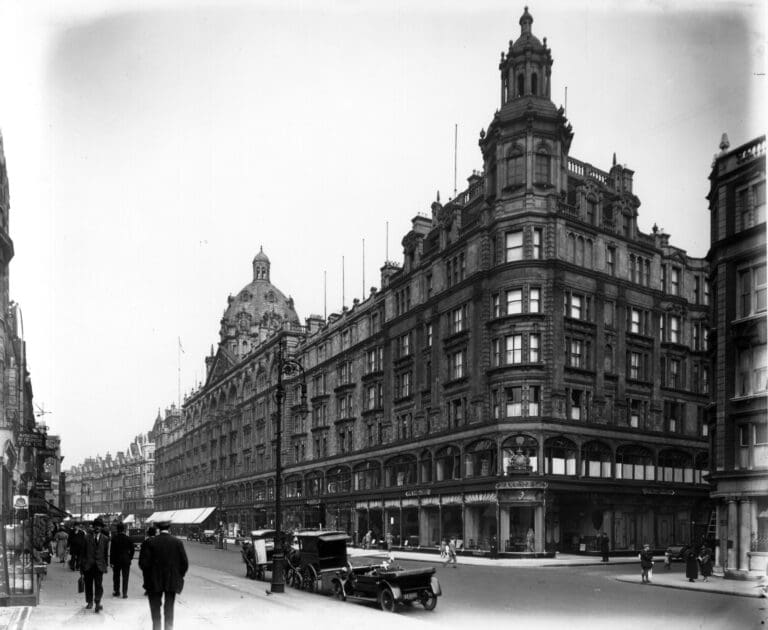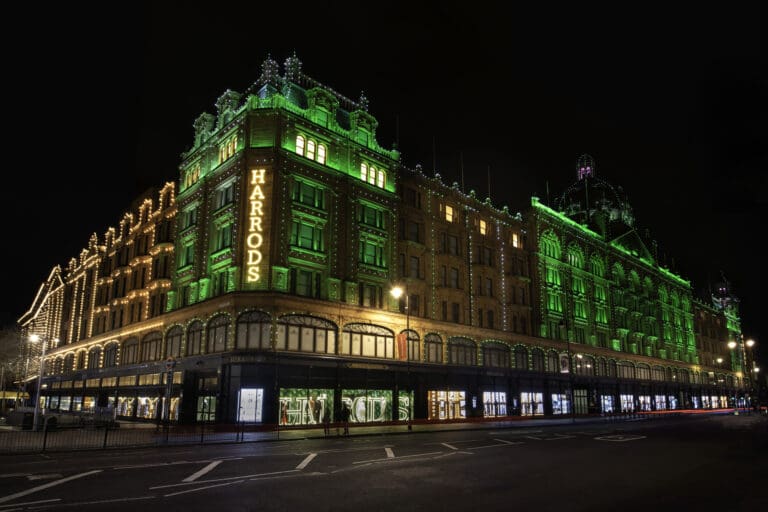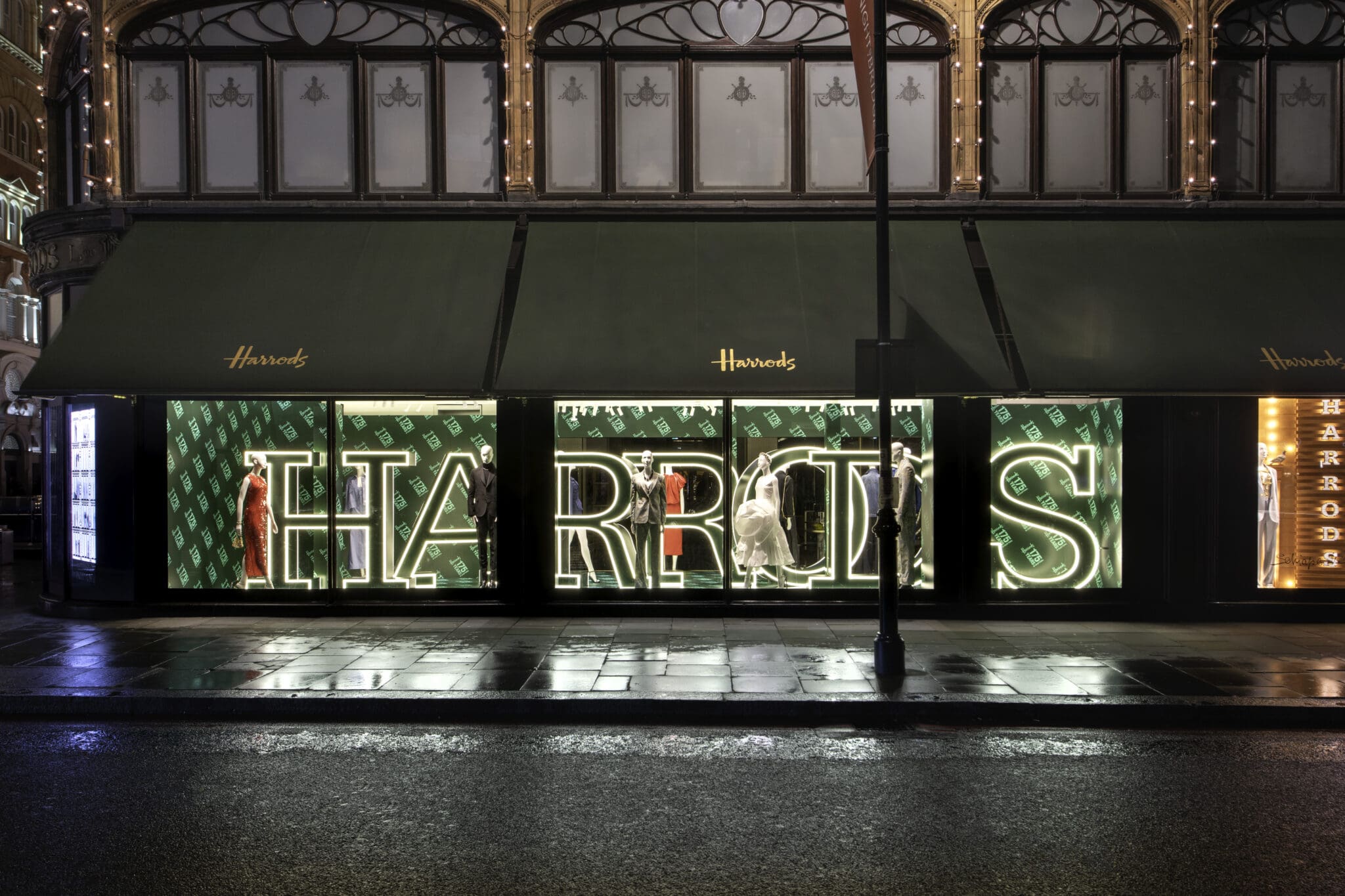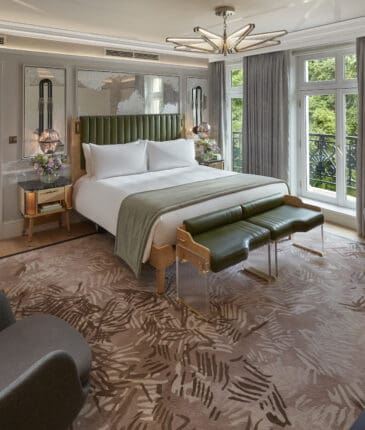No-one knows Harrods quite like its resident archivist Sebastian Wormell. Here, he tells us about a typical working day, why Harrods is so iconic and plans for the 175th anniversary
Meet… Sebastian Wormell

How did you end up working at Harrods and what is your professional background?
I studied languages and art history, and I first became involved with Harrods as an architectural historian researching the history of the building. I was later asked to step in to support the store’s archivist and I have been with the archive team ever since.
What’s a typical day like for you?
The archive team at Harrods consists of two people: myself and the archive executive. We are currently undertaking the major project of reviewing the entire archive: opening boxes, checking contents, correcting descriptions. This has been made possible because the collection has recently been moved out of storage at the Harrods warehouse in Thatcham – where it had been kept for the past 10 years – and relocated to our offices in Hammersmith. On other days, we respond to enquiries on a wide range of subjects, mostly from colleagues in Harrods. We also run a programme of presentations on the archive and Harrods history for teams in departments throughout the business. As you can imagine, there has been a lot of interest this year because of the 175th anniversary.

How have you been preparing for this year’s anniversary celebrations?
We have looked in the archive for what Harrods did to mark our previous big anniversaries: the 60th in 1909, 100th in 1949 and 150th in 1999. We have tried to make sure there is a consistent and accurate history of the business available for colleagues, with all the main dates and events in place. We have worked with some of the brands participating in the 175th by sharing our knowledge and materials from the archive.
How are you preserving the records and achievements of Harrods today for future generations?
We continue to collect printed material – the business still produces publications such as Harrods Magazine. However, the vast majority of records created today are in digital form and no longer appear as printed documents. For example, the archive’s old series of printed staff magazines (Harrodian Gazette etc.) and the weekly customer mailers (Harrods News) are both extremely useful resources but today’s equivalents are no longer publications, they are websites, emails and social media posts. The capture, storage and long-term preservation of digital items present special challenges, which we are addressing.

If you could take anything home from Harrods, what would it be and why?
A beautiful display case in the archive, made in 1911 for the Gem Room, which opened that year for fine jewellery. Manufactured by the shopfitting firm Fredereck Sage, who made most of the furnishings for Harrods in the early years, it is Louis XIV style, with ormolu fittings – a reminder of the glamour of Edwardian Harrods. Sadly, modern security requirements and health and safety regulations mean it can no longer be used on the shopfloor.
Do you have a favourite section of the store?
It has to be the Dining Hall on the ground floor. The amazing Edwardian tile decoration by brilliant Arts and Crafts artist William Neatby is quite unique, with its stylised medieval scenes of hunting and animal husbandry. Until five years ago, this was still the Market Hall, where meat and fish were sold. Now that the whole hall has been meticulously restored and is devoted entirely to restaurants, diners have time to admire the exquisite decor.

What do you think it is that makes Harrods so iconic and world-famous?
The palatial terracotta building in Brompton Road is an important factor – not many businesses are so closely identified with their building. Today, after a massive programme of refurbishment and renewal, the Harrods building is looking better than ever. But the building isn’t everything. Harrods’ reputation was built on a level of service that few could rival. British expatriates around the world knew they could rely on Harrods just as they could at home, which is one reason for the store’s worldwide fame.

What is your favourite fact about Harrods’ history?
Most people today will find it surprising that one of Harrods’ slogans in the 1890s – besides Omnia Omnibus Ubique (‘Everything for Everybody Everywhere’) – was ‘The Cheapest Stores in London for Everything’. This changed at the beginning of the century when it became ‘The Most Fashionable Resort for Shopping in London’.
Visit harrods.com for more information about the ongoing 175th anniversary celebrations



